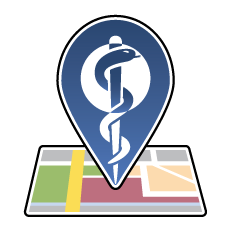Give Back
These organizations allow you to help those in need by using your mapping skills. Get started learning how you can help right now!
MAP GIVE
MapGive is a U.S. Department of State initiative that encourages and increases volunteer participation in the global mapping community and facilitates the creation of open geographic data to support humanitarian relief and development programs.
This site provides step-by-step instructions to help volunteers like you learn to map and get involved in humanitarian initiatives.
Humanitarian open streetmap team (HOTOSM)
HOT is an international team dedicated to humanitarian action and community development through open mapping. We work together to provide map data which revolutionises disaster management, reduces risks, and contributes to achievement of the Sustainable Development Goals.
There are lots of ways to volunteer with HOT, including mapping, validation, and contributing a key skillset you have such as supporting material creation, or helping develop and maintain their tools.
GISCorps
Operating under the auspices of URISA, GISCorps coordinates short-term, volunteer-based GIS services to underprivileged communities. Our services include finding qualified GIS volunteers for short term projects and establishing partnerships to create volunteer opportunities for the GIS community.
Projects vary based on the partner agency’s need and may involve any and all aspects of GIS including analysis, cartography, app development, needs assessments, technical workshops, etc. Areas of service include humanitarian relief, disaster response, conservation, environmental quality, health and human services, GIS education, and expert crowdsourcing. GISCorps is supported by individual donations, corporations, and other non-profit groups with similar goals.
MISSING MAPS
Each year, disasters around the world kill nearly 100,000 and affect or displace 200 million people. Many of the places where these disasters occur are literally 'missing' from any map and first responders lack the information to make valuable decisions regarding relief efforts. Missing Maps is an open, collaborative project in which you can help to map areas where humanitarian organisations are trying to meet the needs of vulnerable people.
MAP SWIPE
Humanitarian organizations can't help people if they can't find them. MapSwipe is a mobile app that lets you search satellite imagery to help put the world's most vulnerable people on the map. MapSwipe is part of Missing Maps, a collaborative project in which a large and committed community of NGOs, academic institutes, companies, and most of all individual mappers, map vulnerable areas in OpenStreetMap. By using MapSwipe to identify where communities are located, you also give these mappers the ability to use their talents to map the towns and villages in these areas without having to search through miles of jungle and bush to find them, saving time and helping to put valuable data into the hands of field teams even faster.
MAPACTION
When disasters strike, which area has been worst affected? Where are the most vulnerable people? What has happened to roads, railways and communication networks? Where are medical supplies and where are they needed most?
MapAction quickly gathers this crucial data at the disaster scene, conveying it visually in the form of maps. By creating this ‘shared operational picture’ for aid agencies, governments and local partners, we can help them make informed decisions and deliver aid and emergency supplies to the right place, quickly.






